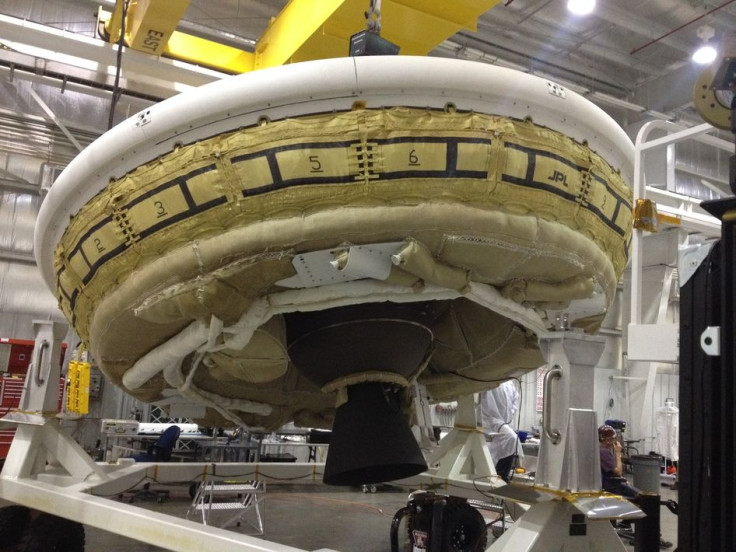NASA 'Flying Saucer' Takes Flight: Watch The Low-Density Supersonic Decelerator Launch Here

The NASA "flying saucer" test flight Saturday was a success. The Low-Density Supersonic Decelerator (LDSD) test vehicle was attached to a high-altitude balloon before being released 120,000 above the Pacific Ocean. The LDSD test vehicle successfully switched over to powered flight and splashed down into the Pacific at 5:35 p.m. EDT.
The LDSD test flight began at 2:45 p.m. EDT and the vehicle launched from the U.S. Navy Pacific Missile Range Facility in Kauai, Hawaii, NASA said. The LDSD test vehicle was detached from the balloon at 5:05 p.m. EDT and splashdown occurred at 5:35 p.m. EDT. Powered flight will bring the test vehicle to a height of 180,000 feet. At that time, the LDSD test vehicle would be traveling at speeds reaching Mach 3.8, NASA said. The flying saucer test flight was delayed several times due to high winds at the launch site.
While the LDSD vehicle looks like a flying saucer, it will not be used as a flight vehicle for future missions to Mars. NASA is figuring out ways to land large payloads, such as cargo or science experiments for longer missions, safely on Mars and an LDSD vehicle could be used for that purpose.
Saturday's launch tested the flight capabilities of the LDSD vehicle as well as two landing technologies: The Supersonic Inflatable Aerodynamic Decelerator (SIAD) was deployed successfully but the Supersonic Disk Sail Parachute did not, NASA said. The SIAD tube helps reduce the speed of the LDSD vehicle to around Mach 2.5.
There are two more LDSD flights which will test the landing capabilities of the vehicle.
Videos of the LDSD test flight can be viewed below.
Archived Video Of The Entire LDSD Test Flight
LDSD Test Flight Preparations
Balloon Launch
LDSD Powered Flight After Balloon Release
LDSD Landing Technologies, SIAD and Parachute
© Copyright IBTimes 2024. All rights reserved.












